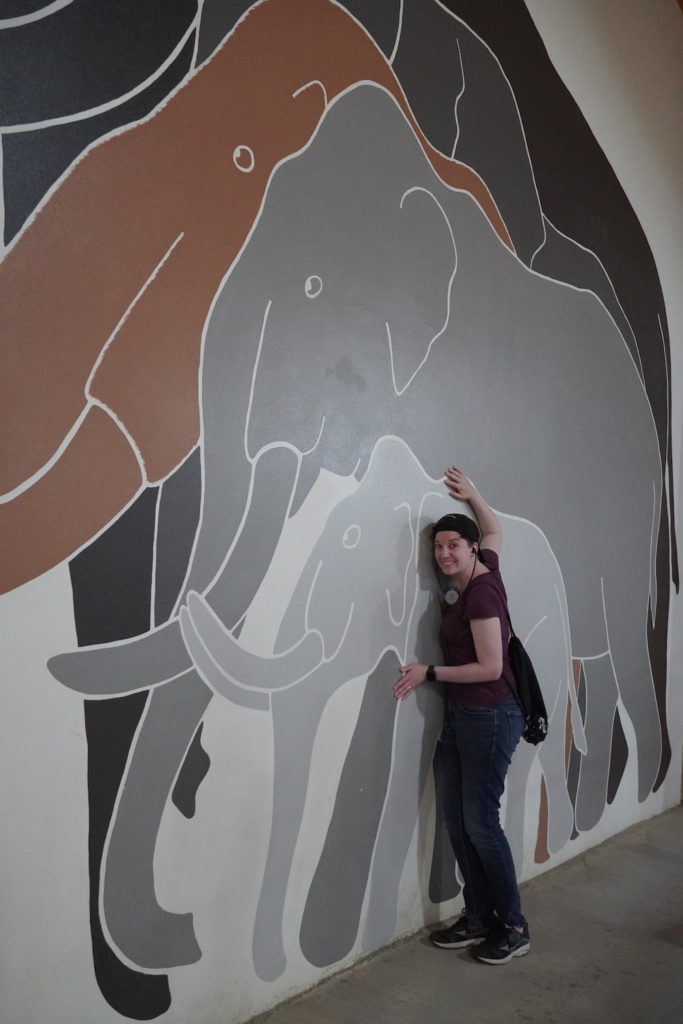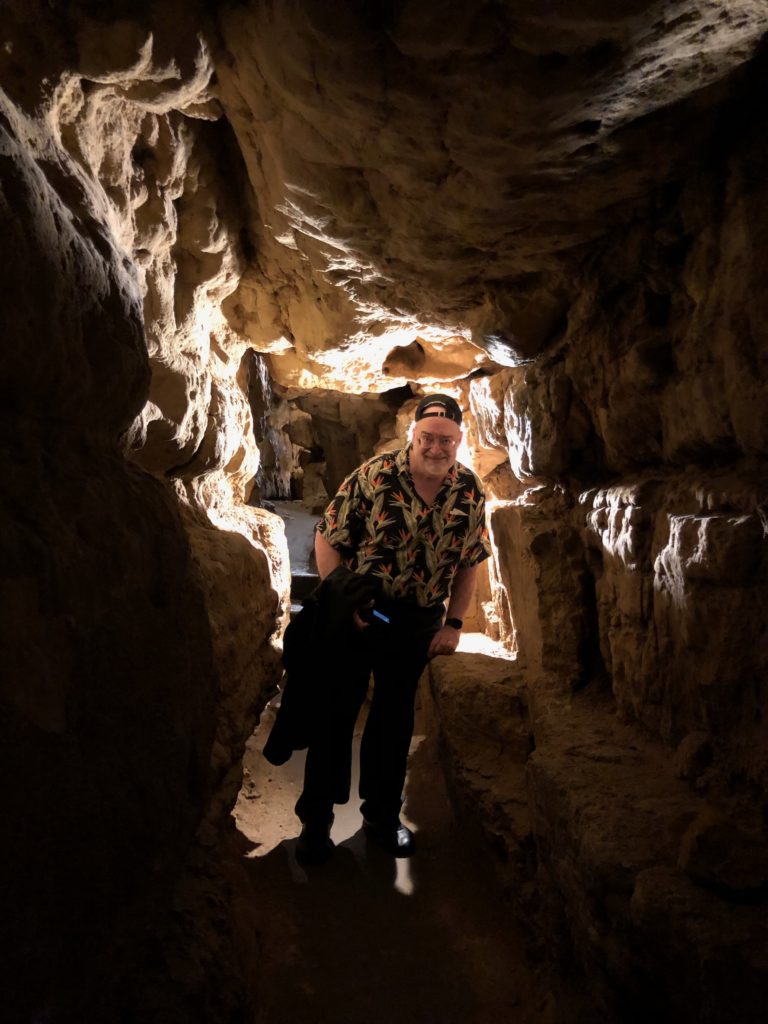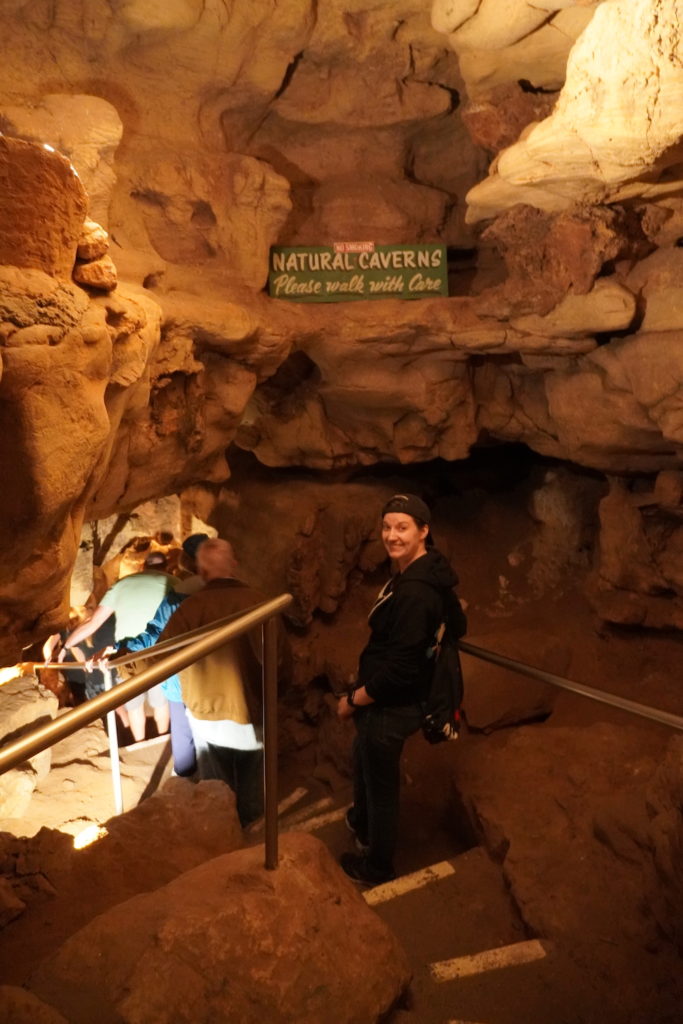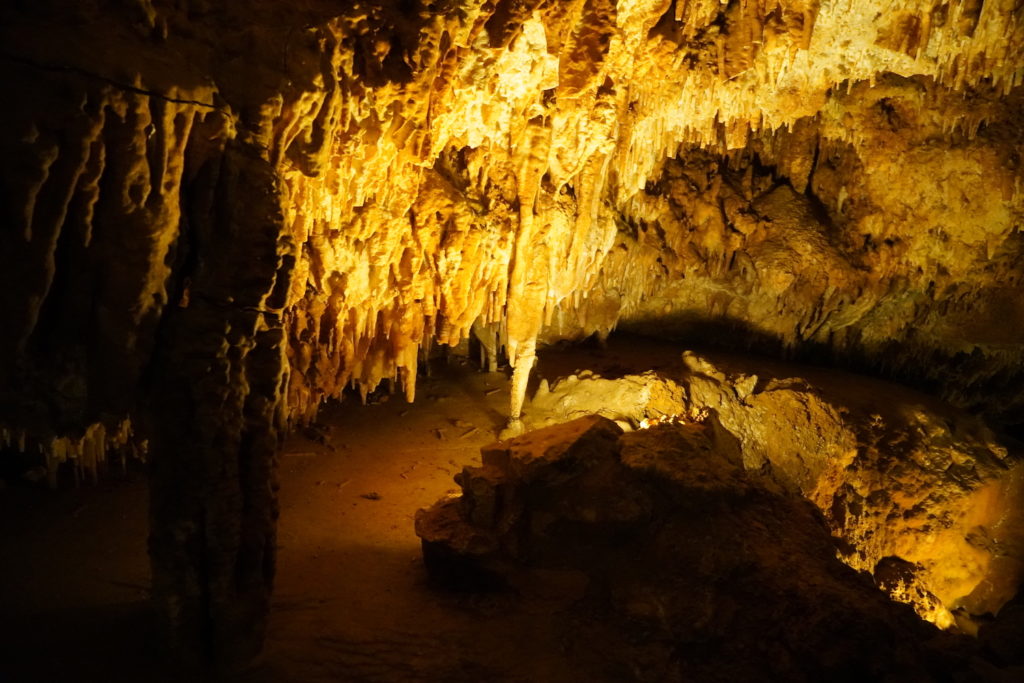Chadron, NE – Mt. Rushmore, SD – Custer, SD
We started today with another breakfast of champions: donuts.
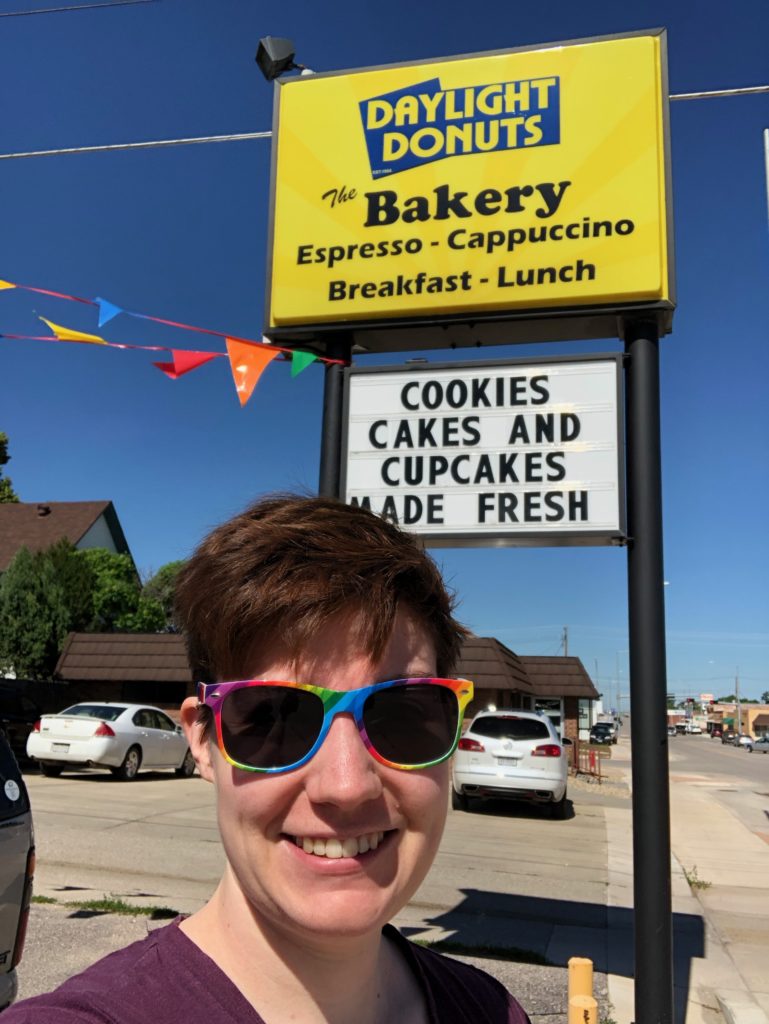
Everyone knew everyone at the local donut shop, Daylight Donuts. The service was extremely slow due to friendliness. Without a schedule to keep to, the eavesdropping was delightful rather than irritating.
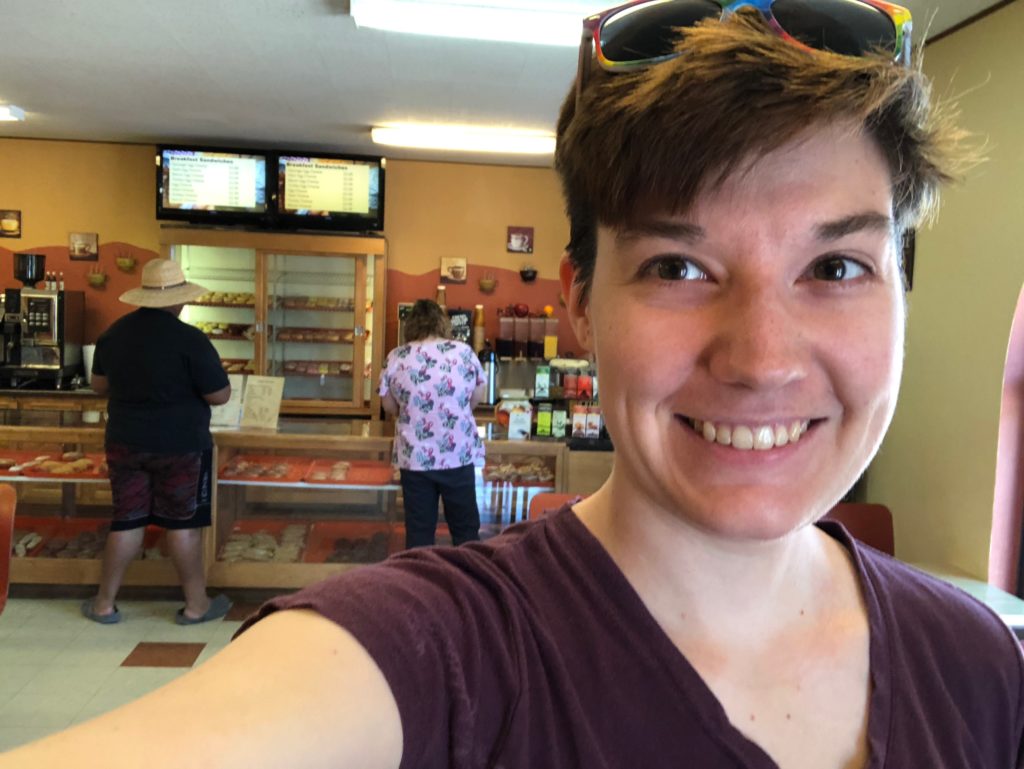
Plus, it gave me more time to study the donut display. I selected a smorgasbord of options: glazed buttermilk, lemon buttermilk, walnut swirl, cinnamon swirl, and an apple Bearclaw.
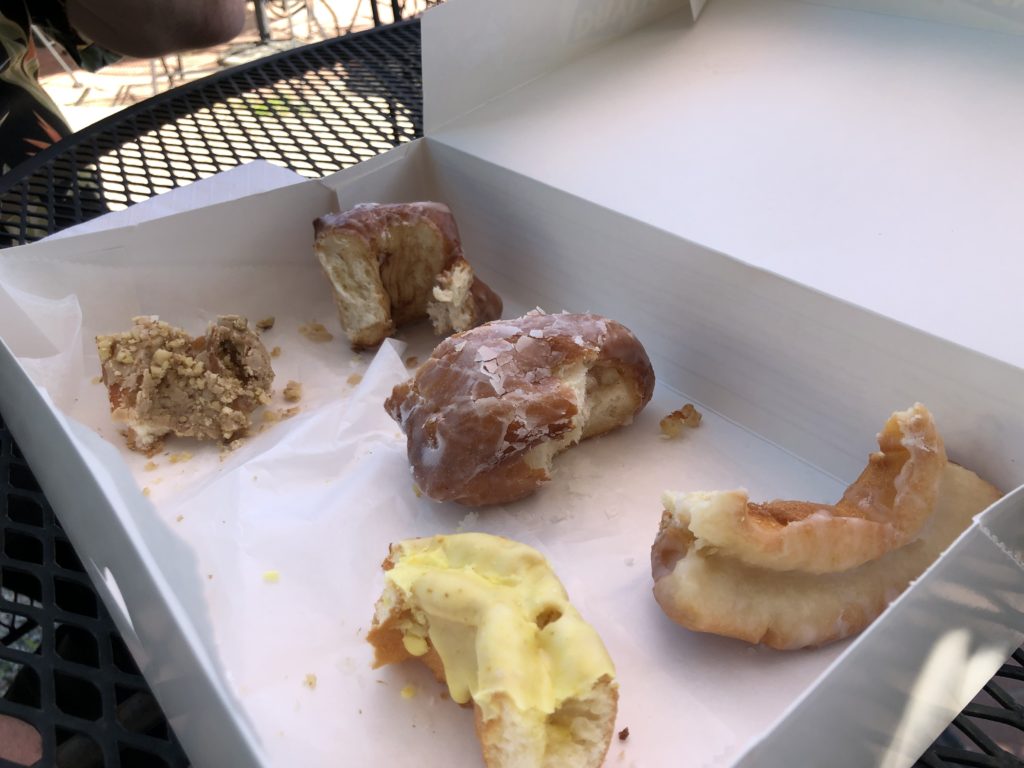
The glazed buttermilk was too sweet but, surprisingly, the lemon buttermilk was well balanced. I think my favorite was the walnut swirl. We didn’t get Chadron’s signature donut because it involved peanut butter (which I just learned Dad isn’t a fan of in baked goods).
After the long drive yesterday, we were able to take things at a slower pace and see more attractions. We drove into Hot Springs, South Dakota for our first stop at the imaginatively named “The Mammoth Site.” This place is really, really cool.

There’s a 10 -minute video presentation between the gift shop and dig site. It’s extraordinarily well-produced because while it is informative it’s never boring.
The Mammoth Site started life as a sinkhole. During the last ice age, it filled with hot spring water, attracting male mammoths for an easy meal and bath. However, the steep, smooth sides meant that if a mammoth fell in, it couldn’t get out. Over time, sediment built up over the bones and filled in the sinkhole. The sediment was harder than the surrounding limestone, so it actually turned into a hill.

In the 1970s, a developer bought the surrounding land, intending to turn it into a housing development. When one of the first bulldozers on the site hit a mammoth tusk, he recognized it and called in a paleontologist to confirm the find.
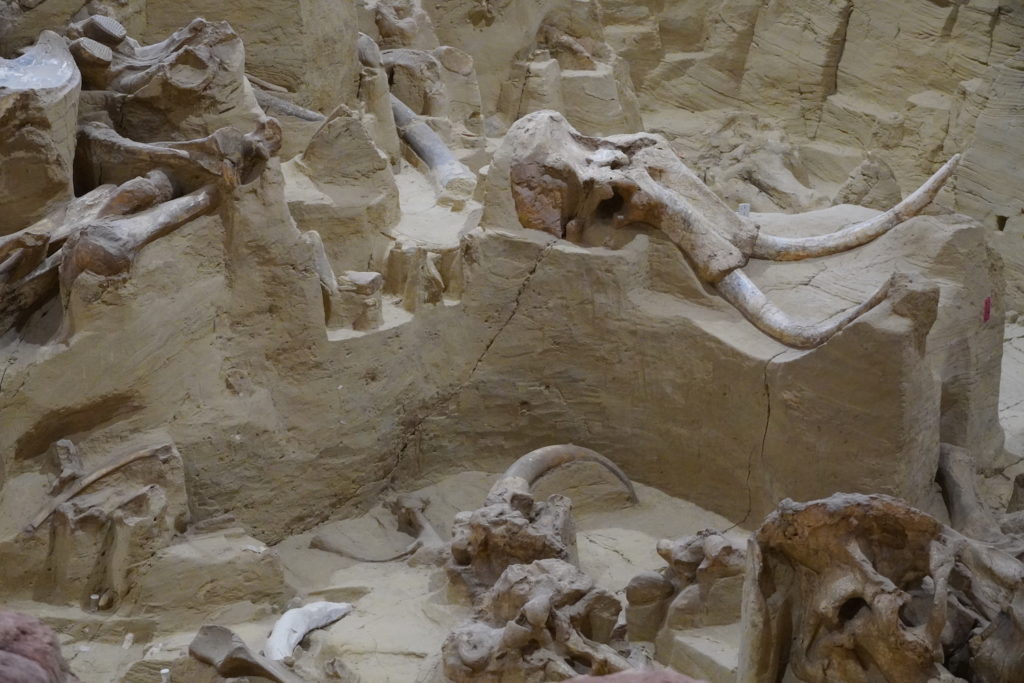
Once they’d assessed the magnitude of the find, he sold the land at cost so scientists could continue excavating.
The bones are technically fossils, but they’re extremely fragile because they haven’t yet turned to stone. All the organic material has been leached away by the hot spring waters, but the bone is still bone. That means they must preserve it as they excavate it.
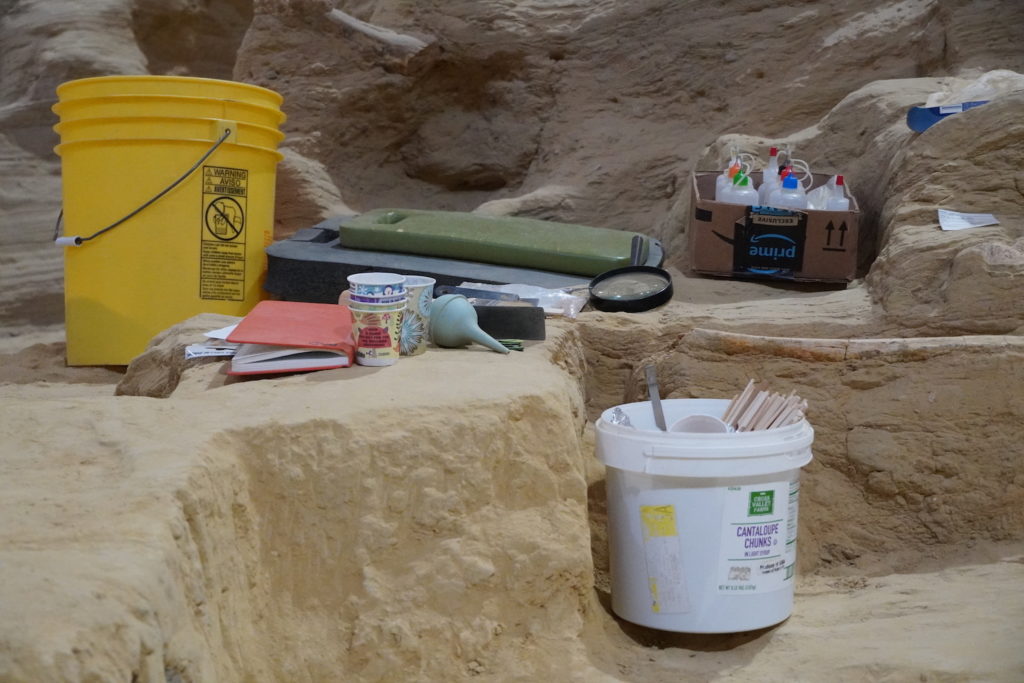
What’s really unique about The Mammoth Site is that they leave as many bones in situ as possible, only removing the most fragile. So far, they’ve excavated down 22 feet (about 1/3 of the way) and discovered 61 mammoth skeletons plus a couple of intact short-faced cave bear skulls (which are extremely rare). They’ve found numerous other smaller mammals, crustaceans, and a couple of fish as well.
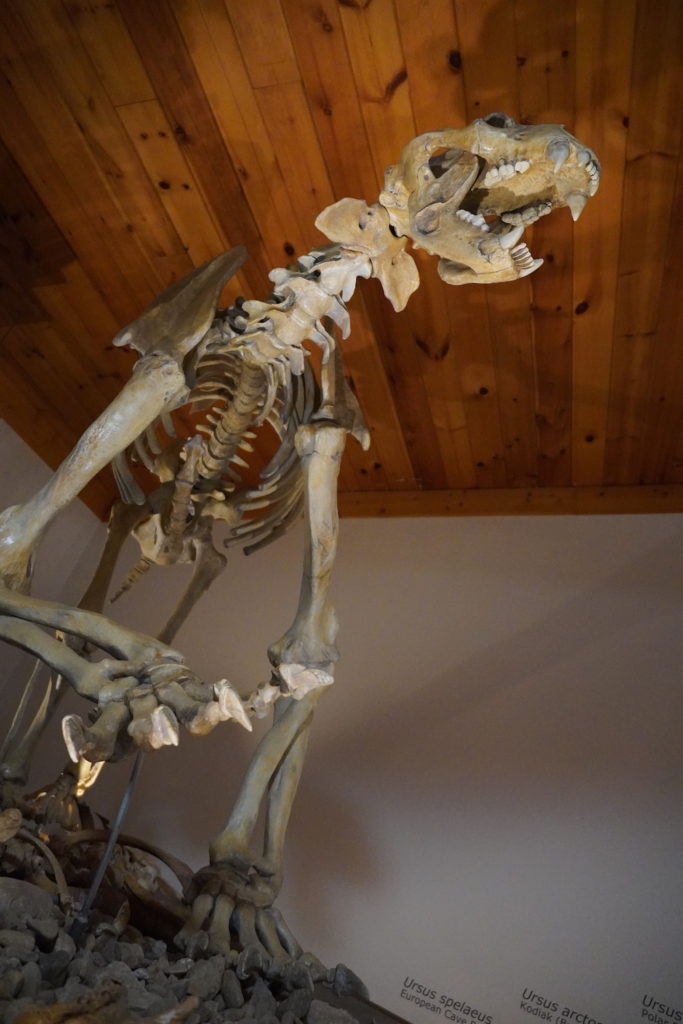
The walls are decorated with informative paintings to give you an idea how BIG these animals were.
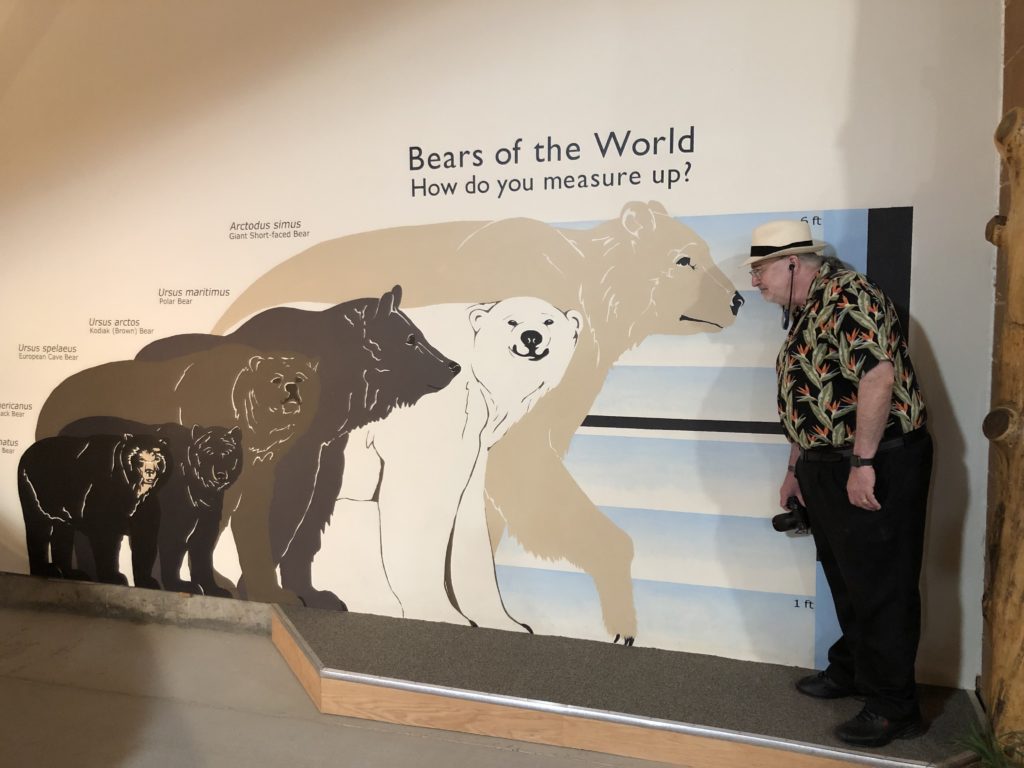
You can also go downstairs to the bone lab where they work to preserve and study the fossils they remove from the site. I really enjoyed our stop and would highly recommend The Mammoth Site to anyone who finds themselves in South Dakota.
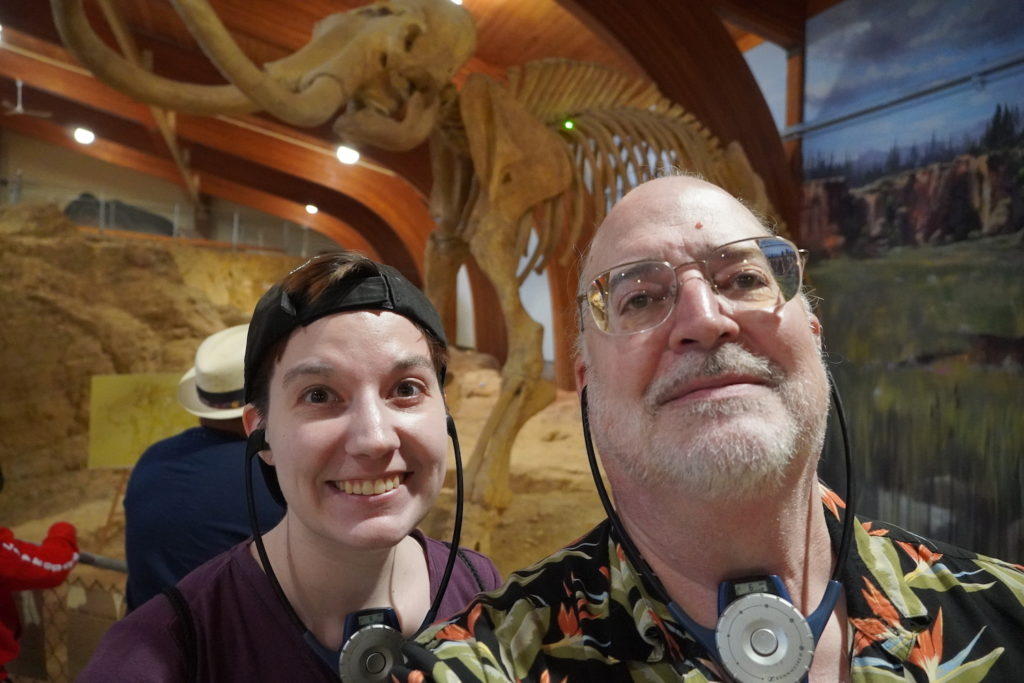
Our path to Mt. Rushmore took us past Rush Mountain Adventure Park, which looked pretty small (just a zip line, gravity-coaster ride, and some other obstacle course things). However, it also boasted a cave tour I thought looked interesting. I convinced Dad we should stop and see it since it was right off the road and hardly even counted as a detour.
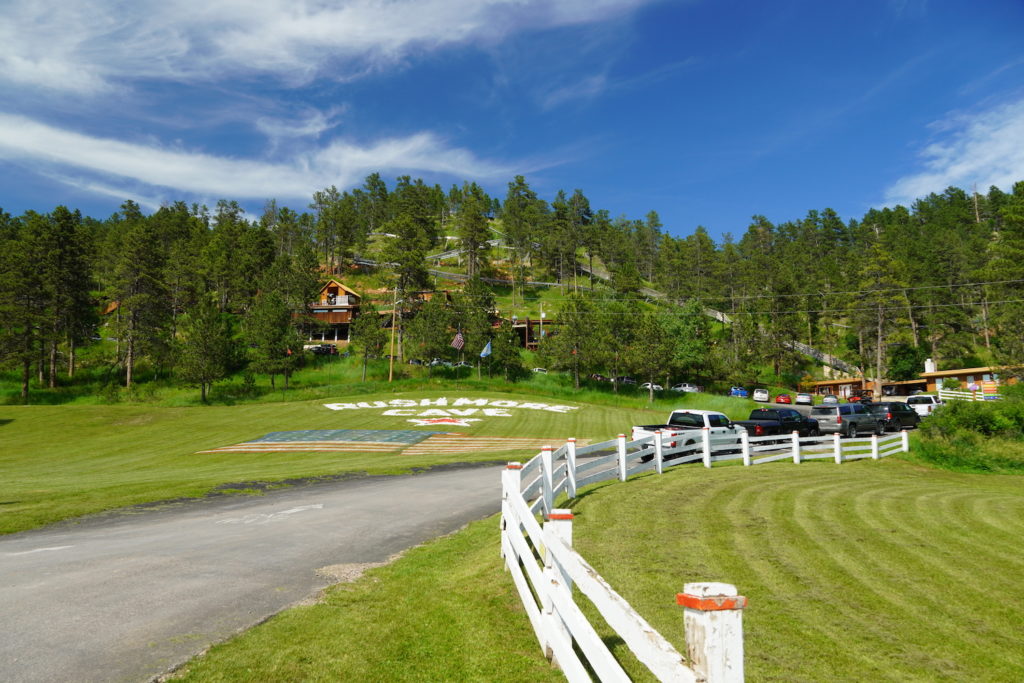
Once we parked the car we discovered, again, ADA has been completely ignored here. I’m pretty sure there was no way to get from the steeply sloped parking area up to the park facilities without climbing about four flights of stairs! At this point, Dad looked extremely skeptical (remember, we’re up at about 7,000 feet so the air is pretty thin).
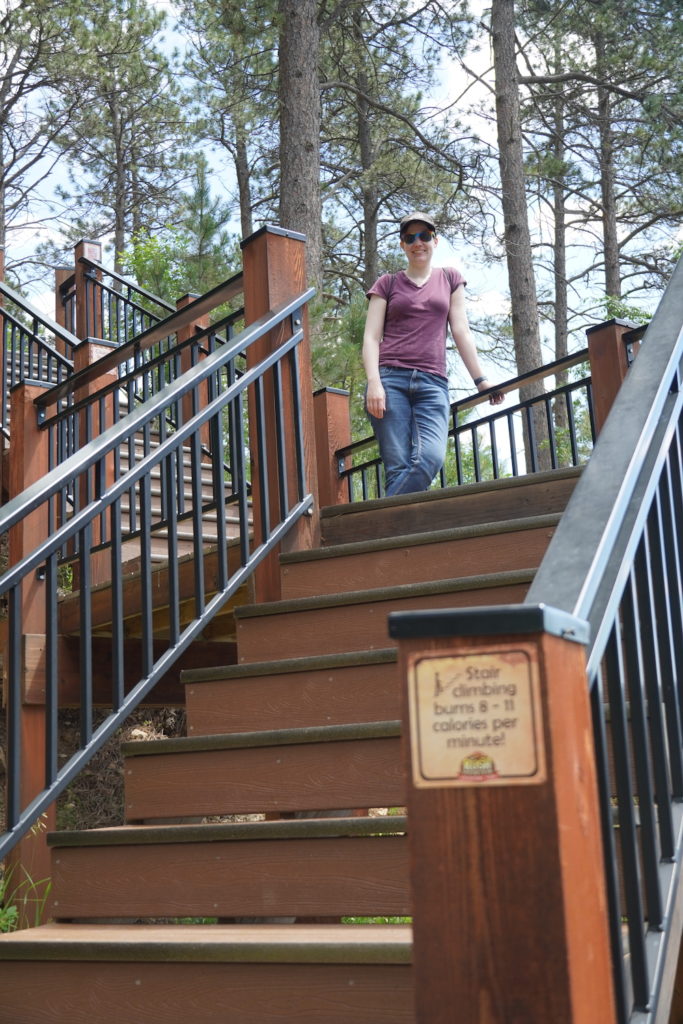
We made it up the stairs and bought tickets for a cave tour leaving in 15 minutes and the gravity coaster. I made another trip to the car and back (up and down all those stairs) to get our jackets since the cave is constantly 58 degrees. I should not have bothered (more on that later).
Our guide for the tour was knowledgable and a good presenter. He gave the standard spiel about not touching the rocks because the oils on our hands damage them and emphatically told us to use the handrails. However, he added an additional detail that in places where there weren’t handrails, if we started losing our balance we should grab a rock. This should have been a warning sign.
Spoiler Alert: this was the twistiest, steepest cave tour I’ve ever encountered. The path wound down through tight squeezes, required climbing steep grades or stairs while hunched over to avoid hitting your head, and went up and down and up and down!

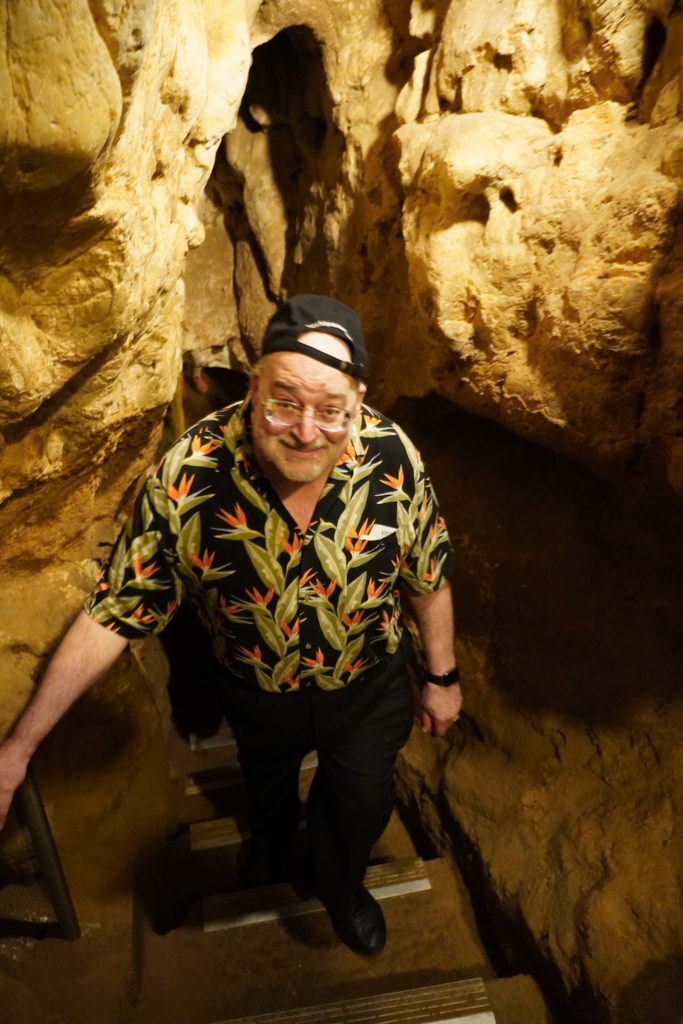
The review I read on Tripadvisor said it was “an easy walk” and that, “while there were a few stairs all but the infirm should be able to complete the walk.” That review was clearly written by a very fit person.
We did complete the walk but we definitely didn’t need our jackets since we continually worked up a sweat navigating the path. That said, I still had a blast. The *challenging* terrain gave a better sense of what it would be like to explore caves before they became tourist attractions.
A local miner discovered the last chamber on the tour. The journey from where we entered to that point used to take 3 hours of crawling. The miner noticed a sloped line that indicated water used to flow down somewhere into the cave beyond what had been explored. However, the passage was completely blocked with dirt. This guy came back with enough food and fuel for two days and stayed underground to dig through.
When he breached the next chamber, I’m sure his jaw dropped. It’s by far the most impressive in the cave. Stalactites drip from the ceiling, thatching it in jagged spikes. Flowstone cascades down the center of the sloped floor. The edges featured some impressive stalagmites and columns.
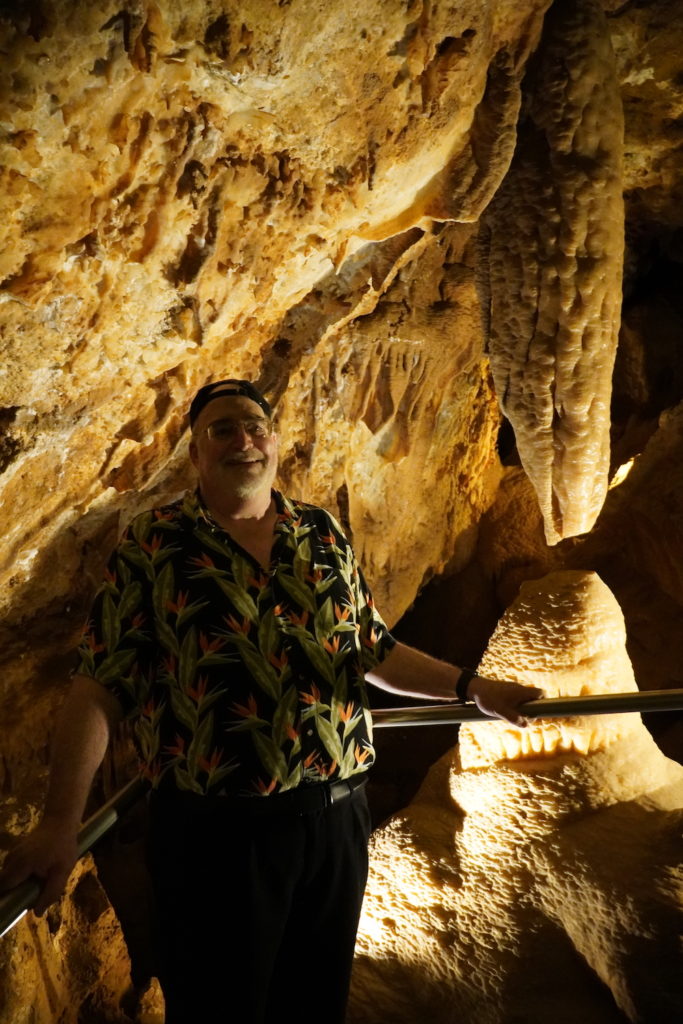
Having discovered this breath-taking place, he could name it anything he wanted. He took a look around and decided to call it “The Big Room.”
Well… he wasn’t wrong.
We made it past the last hurdle to escape the cave (a 7-step ladder with a low hanging rock at the top nicknamed “Headache Rock”) and returned to a sun-drenched, flat (albeit staircased) landscape.

On our way out, the guide told us we could come back for one of their “Adventure Tours” that requires squeezing through a 10-inch high tube. No thank you!
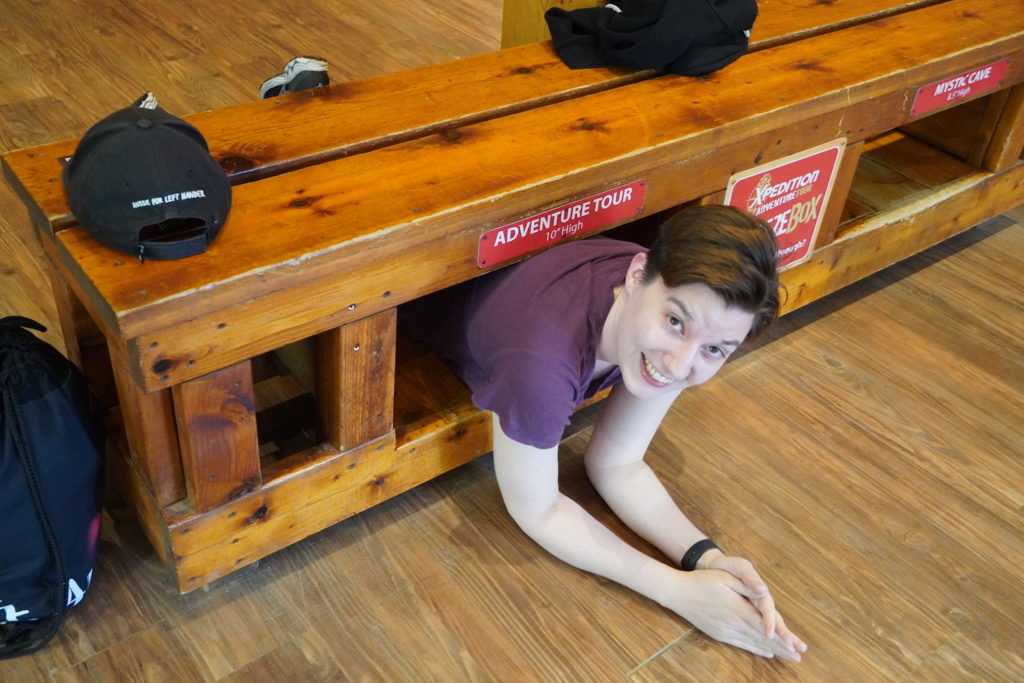
The gravity coaster was a fun novelty. It twisted and turned all the way down the mountainside which gave you a great view while hurtling along the tracks. Everyone sat in an individual vehicle and had control of the brakes. A chain hauled you to the top, where you released the brakes and zoomed down the mountain.
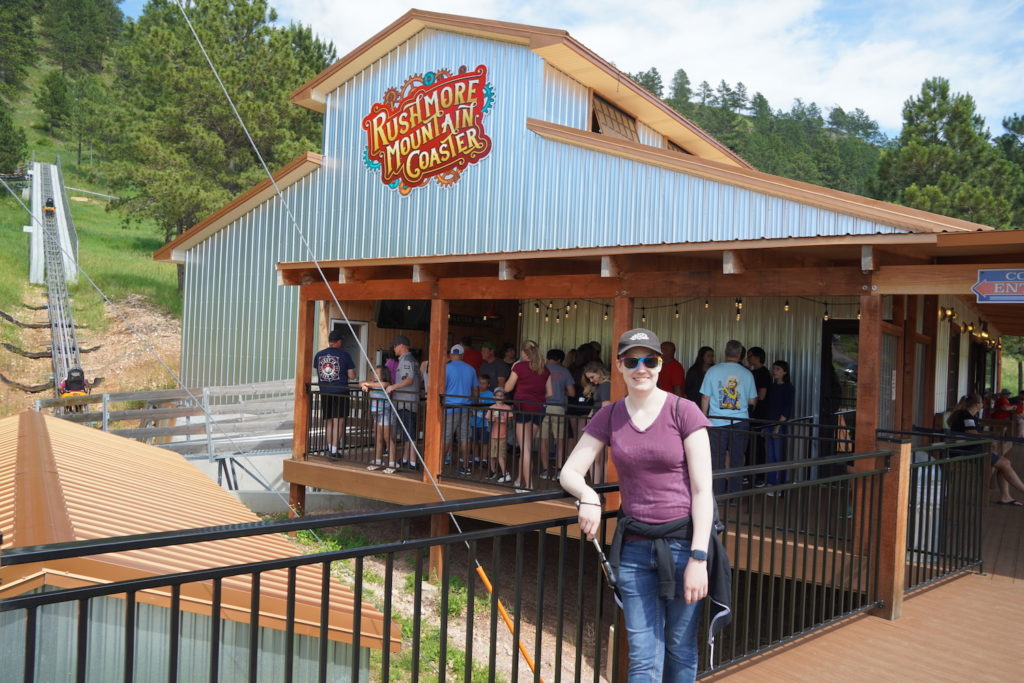
The exit of the coaster was almost at the same elevation as our car (as long as you didn’t mind walking through a field). I was a good daughter and fetched the car to pick up Dad.
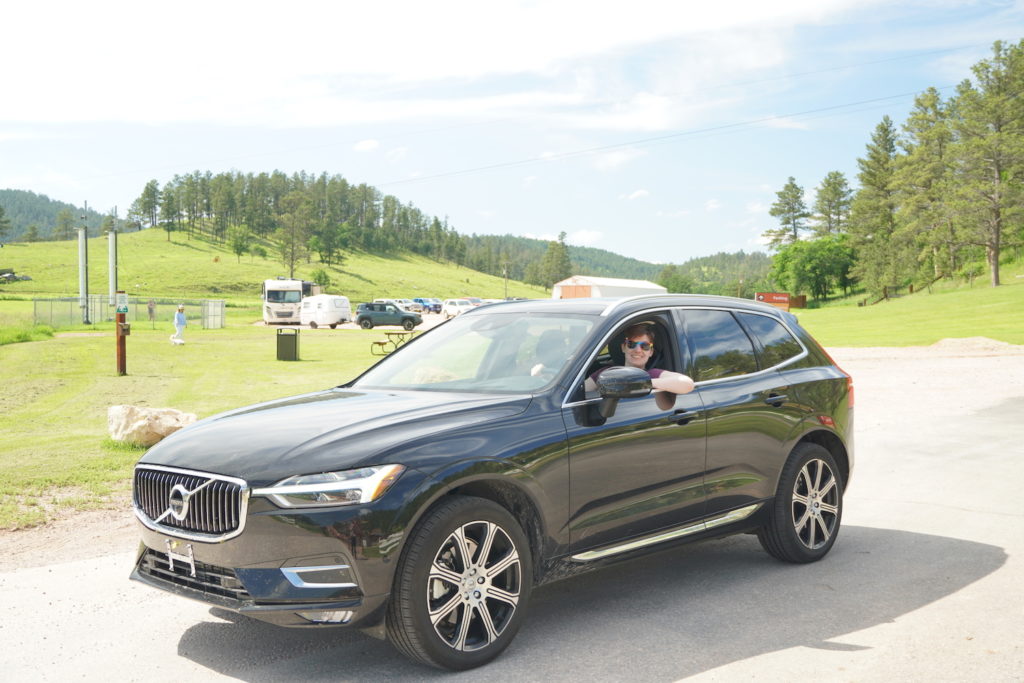
Our exit was temporarily blocked by a wayward cow crossing the highway.
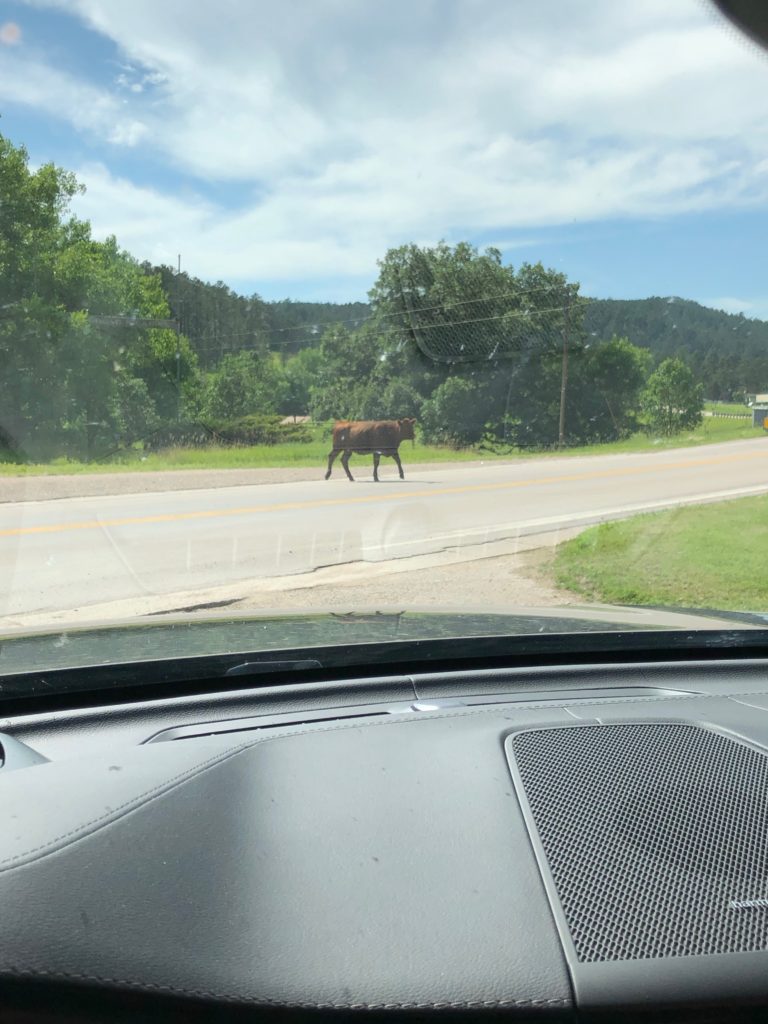
We wound through some more twisty roads until we came upon Mt. Rushmore. Amazingly, the Mt. Rushmore parking garage has a new-fangled invention called “an elevator.” It was a relief.
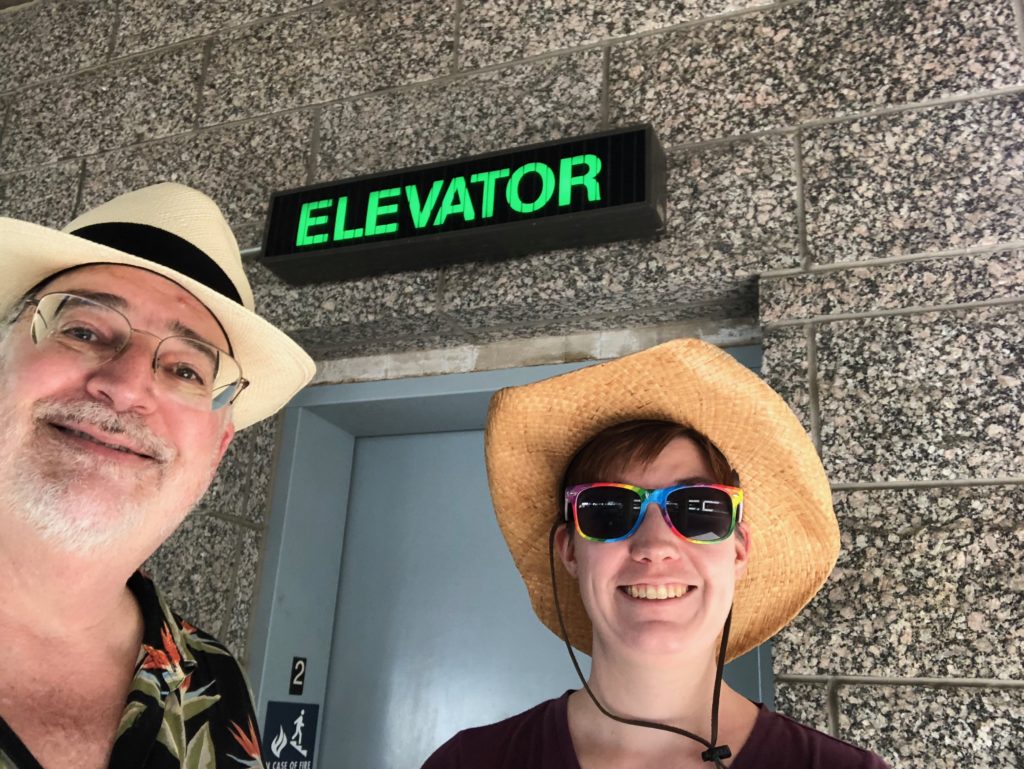
Mt. Rushmore was pretty cool. We were a lot closer than I thought we’d be and it wasn’t an absolute zoo. Our stop at the cave pushed our arrival at Mt. Rushmore into the late afternoon, so the light was good for photographs.
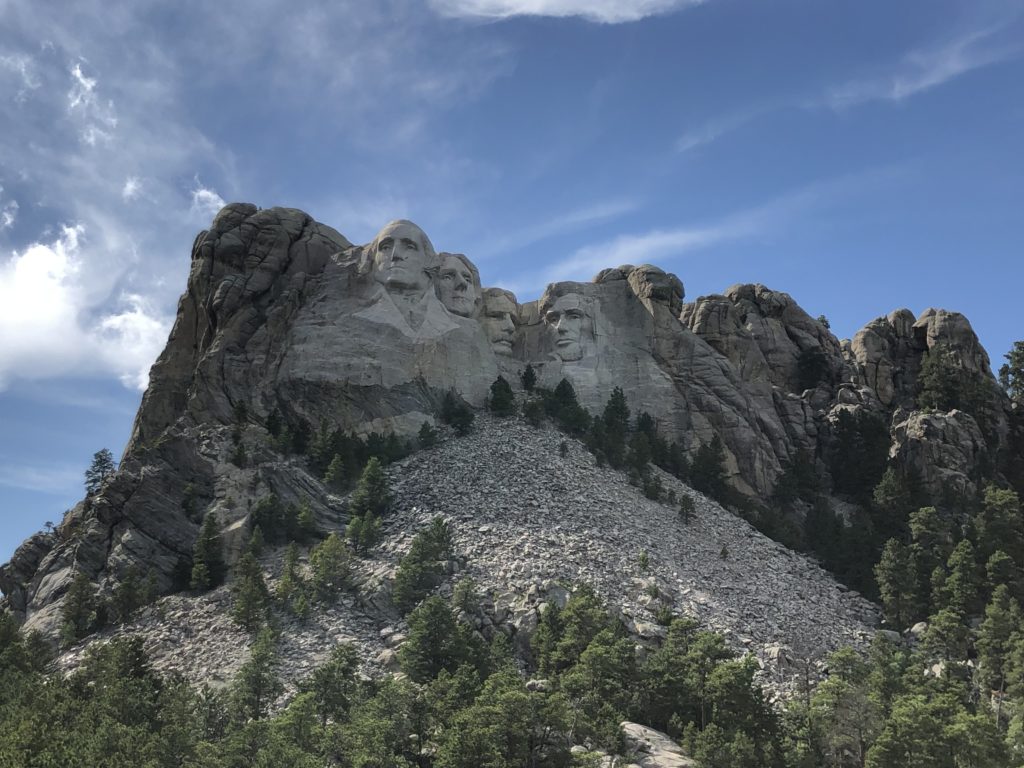
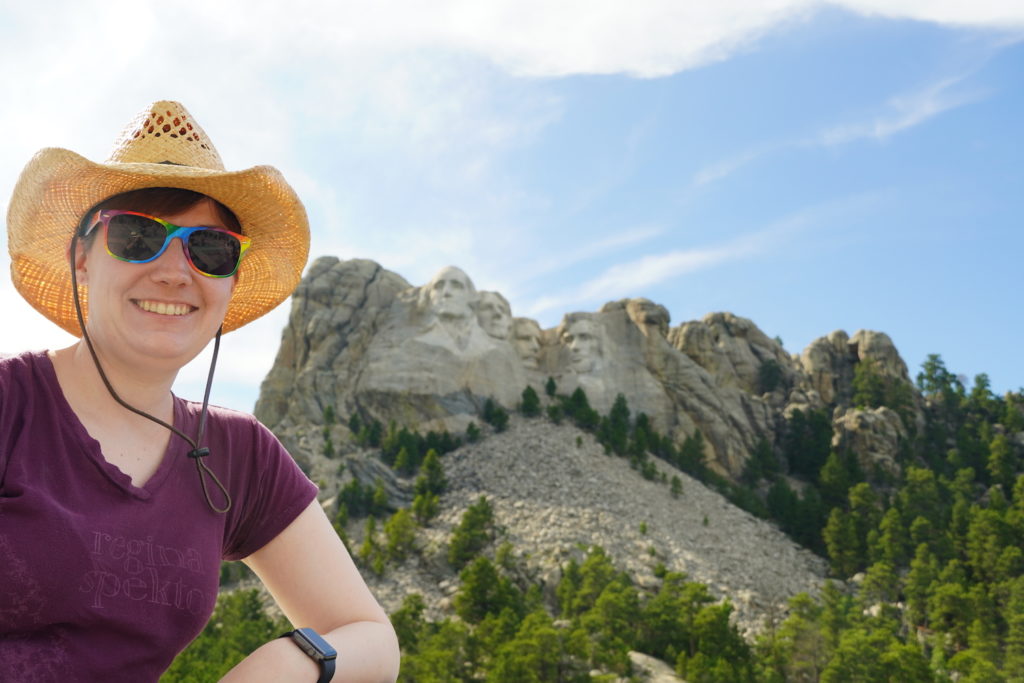
We drove past Crazy Horse on our way into Custer, South Dakota. I used our limited cellular connection to find a couple of promising restaurants for dinner. I’m so glad we picked Skogen.
The restaurant is run by a couple who started out in the midwest, lived in California for six years, and wanted to move back to the midwest. They fell in love with Custer and opened this restaurant. Everything was exceptional!
Originally, we planned to press on through 200 more boring miles and stay in the middle of nowhere tonight so we’d be closer to Yellowstone, but the evening was so lovely we decided to stay and linger over our meal and a good bottle of wine.

We stayed at a really charming motel, the Bavarian Inn. Unsurprisingly, we had no trouble falling asleep!
Miles driven: ~140


